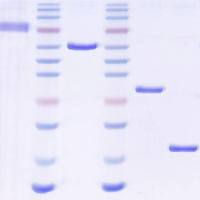The translocation of single mRNPs (mRNA–protein complexes) from the nucleus to the cytoplasm through the nuclear pore complex (NPC) is an important basic cellular process. Originally, in order to visualize this process, single mRNP export was examined using electron microscopy (EM) in fixed Chironomus tentans specimens. These studies described the nucleocytoplasmic translocation of huge mRNPs (~30 kb) transcribed from the Balbiani-ring genes. However, knowledge of the in vivo mRNP kinetics in cell compartments remained poor up until recently. The current use of unique fluorescent protein tags, which are able to bind to mRNA transcripts, has allowed the detection and measurements of single mRNP kinetics in living cells. This has demonstrated that mRNP movement is affected by the size of the transcript and the splicing process. It was found that mRNP rates of translocation are slower in the nucleus compared to the cytoplasm and that the cell nucleus contains interchromatin tracks in which mRNPs diffuse. In order to track single mRNP movement in living cells, it is important to be able to identify single mRNP molecules transcribed from a certain gene, at the single-cell level. Single-molecule analysis of gene expression requires advanced imaging systems and analytical software in order to detect and follow the movement of single mRNPs. In this chapter we describe the methods required for the detection and tracking of single mRNP movement in living mammalian cells.






